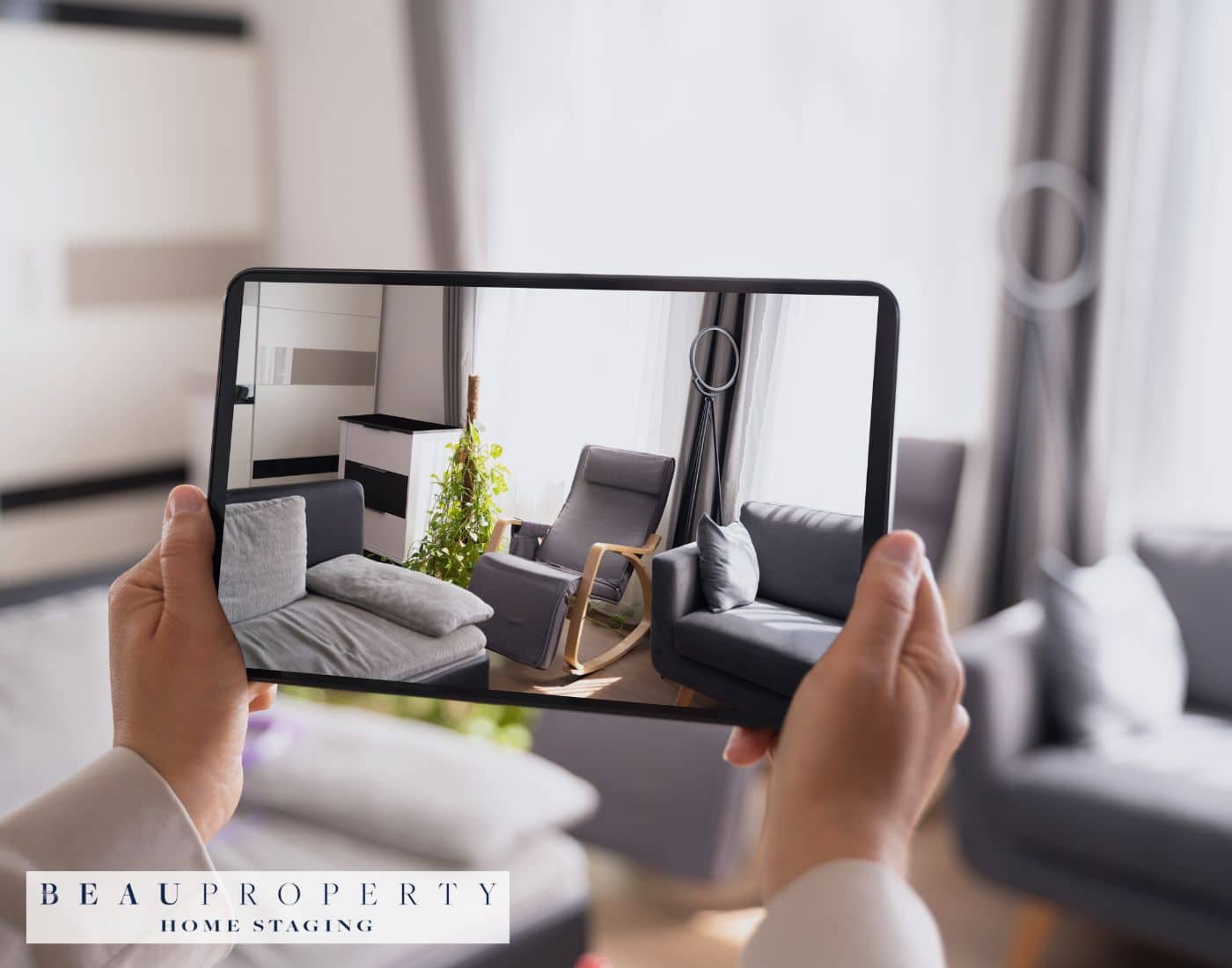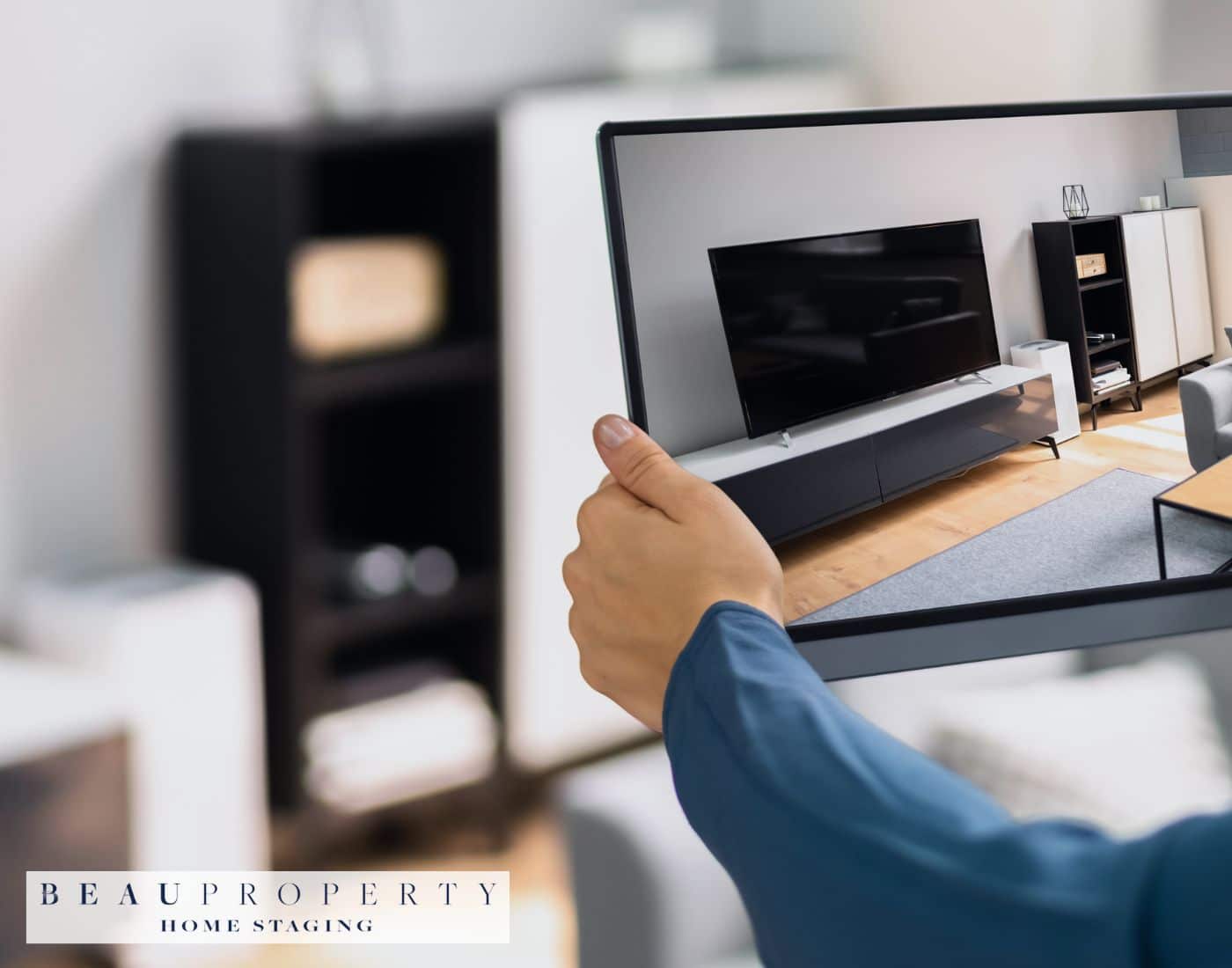Introduction to Virtual Tours
The Growing Importance of Virtual Tours
Virtual tours have become increasingly vital in the real estate industry, providing an immersive and convenient way for prospective buyers to explore properties remotely. With the rise of technology and the COVID-19 pandemic, virtual tours have gained significant traction, allowing buyers to view homes without the need for in-person visits.
Benefits for Home Sellers
- Increased reach and exposure: Virtual tours allow sellers to showcase their properties to a global audience, attracting potential buyers who might not have the opportunity to visit in person.
- Higher qualified leads: Properties with virtual tours receive 49% more qualified leads than those without, according to a study by Matterport.
- Reduced scheduling conflicts: Virtual tours eliminate the need for coordinating in-person showings, saving time and minimising disruptions.
- Competitive advantage: By offering virtual tours, sellers can differentiate themselves from competitors and stand out in the market.
Benefits for Home Buyers
- Increased confidence: According to a study by REW, 67% of buyers feel more confident about their purchase decisions after viewing virtual tours.
- Convenience and accessibility: Virtual tours allow buyers with mobility issues or busy schedules to explore properties at their convenience.
- Time-saving: Buyers can pre-screen properties and eliminate those that do not meet their criteria, saving time and effort.
The Importance of Effective Staging
While virtual tours offer numerous advantages, effective staging is crucial to ensure a successful virtual tour experience. Proper staging can highlight a property’s best features, create an inviting atmosphere, and help potential buyers visualise themselves in the space.
Subsequent chapters will delve into the specific techniques and strategies for staging homes effectively for virtual tours, including decluttering, lighting, highlighting key features, and creating a seamless virtual tour flow.
Decluttering and Depersonalising
Importance of Removing Personal Items and Clutter
Removing personal items and clutter is crucial when staging your home for virtual tours. Decluttering helps create a clean and spacious look that allows potential buyers to envision themselves living in the space. Personal items like family photos, memorabilia, and unique decor choices can make it difficult for buyers to imagine the home as their own.
How Clutter Affects Viewers’ Perception
Clutter can be distracting and make spaces appear smaller than they actually are. When viewers see a cluttered room during a virtual tour, their attention is drawn away from the home’s features and towards the mess. This can negatively impact their perception of the property.
Tips for Decluttering and Depersonalising
Start Small
Begin decluttering and depersonalising one room at a time. Focus on a small space like a closet or entryway first to make the task feel more manageable.
Remove Unnecessary Items
- Clear off surfaces like tables, shelves, counters, and walls by removing items like books, trophies, and other personal belongings.
- Store away countertop appliances, such as coffeemakers, toasters, and blenders.
- Remove family photos, memorabilia, and knick-knacks from shelves and surfaces.
Declutter Closets and Storage Areas
- Thin out clothes in closets, leaving an inch of space between hangers.
- Clear the floors of closets and remove stray items.
- Remove excess linens from linen closets, leaving space above stacks of folded towels.
- Use matching storage containers for dry goods in the pantry instead of original packaging.
Depersonalise Living Spaces
- Remove personal items like family photos, memorabilia, and unique decor choices that make it difficult for buyers to envision themselves in the space.
- Consider removing a chair or two to clear visual clutter in living areas.
- Pare down shelves bursting with books and frames.
By following these tips, you can create a clean and depersonalised space that allows potential buyers to focus on the home’s features during the virtual tour.
Lighting Techniques
Proper lighting is crucial for creating a successful virtual tour. It not only illuminates the space but also sets the mood and atmosphere, shaping the viewer’s perception of the property. Here are some effective lighting techniques to enhance your virtual tours:
Maximise Natural Light
Natural light is often the most flattering and appealing source of illumination. To maximise its potential, consider the following tips:
- Open curtains and blinds to allow natural light to flow into the room.
- Use mirrors strategically to reflect and amplify the available natural light.
- Incorporate sheer or light-coloured window treatments to diffuse and soften the natural light.
Use Artificial Lighting
While natural light is preferred, artificial lighting can be a valuable supplement, especially in areas with limited natural light sources. Consider the following techniques:
- Use soft, diffused light sources like LED panels or softboxes to evenly illuminate the space without creating harsh shadows.
- Position artificial lights at a 45-degree angle to your subject to create a flattering, three-dimensional effect.
- Experiment with different colour temperatures to achieve a warm, inviting ambiance or a cooler, more modern feel.
Highlight Key Features
Lighting can be used strategically to draw attention to the home’s most attractive features. Here are some techniques to consider:
- Use accent lighting, such as track lighting or uplights, to highlight architectural details, artwork, or other focal points.
- Position lights to accentuate the texture and depth of surfaces, creating visual interest and dimension.
- Experiment with different angles and intensities to create a sense of drama and depth in the virtual tour.
By implementing these lighting techniques, you can create a visually appealing and engaging virtual tour that showcases the property in its best light, allowing potential buyers to appreciate its true beauty and potential.
Highlighting Key Features
When creating a virtual tour, it’s crucial to highlight the home’s standout features that will capture the interest of potential buyers. These key selling points could include a spacious, modern kitchen, a luxurious master suite, or breathtaking views from the living areas. By strategically showcasing these highlights, you can make a lasting impression on viewers and help them envision themselves living in the space.
Identifying the Standout Features
Start by making a list of the home’s most impressive features. Think about what initially drew you to the property and what aspects visitors often compliment. Consult with your real estate agent, as they’ll have insight into what features are currently in high demand with buyers in your area.
Showcasing the Best Features
Once you’ve identified the key selling points, plan to spend extra time showcasing them during the virtual tour. Use strategic camera angles and lighting to make these spaces look their absolute best. For example, if you have a stunning kitchen with top-of-the-line appliances and ample counter space, ensure the lighting is optimal and the counters are clear of clutter to truly highlight this standout room.
If your home boasts incredible views, make sure to capture them from multiple vantage points and during the optimal time of day. Open curtains and blinds to let in natural light and frame the vista.
Guiding the Viewer’s Attention
In addition to showcasing the top features, you can use visual cues to draw the viewer’s eye to these areas. Consider adding subtle arrows or signs to guide their focus, or use accent lighting to highlight architectural details or design elements you want to emphasise.
Your real estate agent may also provide narration during the virtual tour, allowing them to verbally point out the home’s most impressive attributes and selling points.
Creating an Emotional Connection
Ultimately, the goal is not just to showcase the physical features of the home, but to create an emotional connection with potential buyers. By highlighting the aspects that make your property truly special, you can help viewers envision themselves living there and inspire them to take the next step in the buying process.
Using high-quality visuals and professional photography to accurately represent the property’s best features and create a stunning, immersive experience for viewers.
By thoughtfully highlighting your home’s key selling points, you can create a virtual tour that not only informs but also captivates potential buyers, increasing the likelihood of generating interest and offers.
Neutral Decor and Furniture
The Power of Neutrals
When it comes to virtual home staging, neutral decor and furniture are highly recommended for several reasons. Neutral colours like beige, grey, and white create a calming atmosphere that appeals to a wide range of potential buyers. According to colour psychology, neutral tones evoke a sense of tranquillity and balance, allowing viewers to envision themselves in the space more easily.
A Blank Canvas
Neutral walls and furniture act as a blank canvas, providing flexibility and versatility in design. This allows potential buyers to imagine their own style and preferences seamlessly blending into the space. Neutral backdrops complement a wide variety of colours, making it easier for buyers to visualise their belongings and decor in the virtual staging.
Timeless Appeal
Neutral colours are timeless and never go out of style. Tan, for instance, is a versatile neutral that pairs well with various colour schemes, making it an excellent choice for virtual staging. By embracing neutral tones, the virtual staging avoids the risk of polarising potential buyers with bold or trendy colour choices that may not resonate with everyone.
Spacious and Inviting
Neutral colours create an illusion of spaciousness, making rooms appear larger and more open. This is particularly important in virtual staging, where the goal is to showcase the property’s potential in the best possible light. Additionally, neutral hues provide a warm and inviting atmosphere, helping potential buyers feel at ease and envision themselves living in the space.
Modern Minimalism
The modern minimalist style, inspired by Scandinavian and German design, celebrates natural materials and neutral or earthy colours. This aesthetic is perfect for virtual staging as it aligns with the principles of simplicity, cleanliness, and functionality. By incorporating neutral decor and furniture, virtual stagers can create a sleek and contemporary look that resonates with today’s buyers.
Complementing with Accents
While neutrals form the foundation, pops of colour can be strategically introduced through accent pieces like throw pillows, artwork, or floral arrangements. This approach allows for creative expression while maintaining a cohesive and appealing overall aesthetic in the virtual staging.
Versatility and Flexibility
A neutral colour base provides a clean and elegant backdrop that allows for easy updates and changes to the home decor without the need for major renovations or repainting. This versatility is particularly valuable in virtual staging, where the goal is to showcase the property’s potential to a diverse range of buyers.
Serene and Peaceful
In today’s fast-paced world, many homebuyers seek a serene and peaceful environment to unwind. Neutral colours in the home interior radiate a timeless vibe and create a sense of tranquillity, making the space feel like a true sanctuary.
Helping Buyers Visualise
Ultimately, the goal of virtual staging is to help potential buyers envision themselves living in the space. By creating a neutral backdrop, virtual stagers can effectively showcase the property’s potential and allow buyers to imagine their own personal touches and belongings seamlessly blending into the virtual environment.
In Summary
Neutral decor and furniture are highly recommended for virtual staging due to their versatility, timeless appeal, and ability to create a calming and inviting atmosphere. By embracing neutral tones as a foundation, virtual stagers can showcase properties in their best light, appeal to a wide range of buyers, and help potential buyers envision themselves living in the space with ease.
Creating a Smooth Virtual Tour Flow
Ensuring a smooth, seamless flow through the home is crucial for an engaging virtual tour experience. Potential buyers should feel like they are taking an actual walkthrough, transitioning naturally from one space to the next.
Guiding the Viewer
Visual Cues
Use visual cues like arrows, signs, or highlights to subtly guide viewers through the tour. This helps them know where to look next and mimics the experience of being led through the home by an agent.
Transitions
Smooth transitions between rooms are key. Avoid abrupt scene changes that can be jarring. Instead, use panning motions or fading effects to move from one space to the next in a fluid manner.
Mimicking an In-Person Tour
The goal is to recreate the feel of an actual walkthrough as closely as possible in a virtual format. This means following a logical path through the home, just as you would during an open house.
- Start with exterior shots to establish curb appeal
- Move through main living areas like the kitchen, living room, and dining room
- Progress to bedrooms, bathrooms, and other secondary spaces
- End with any additional areas like basements, attics, or outdoor living spaces
Maintain a consistent flow by opening interior doors ahead of time to avoid interruptions in navigation.
Highlighting Key Features
While maintaining an organic flow is important, you’ll also want to purposefully highlight the home’s most impressive features and selling points. Use strategic camera angles and visual focus points to draw the viewer’s eye to fireplaces, architectural details, beautiful views, and other noteworthy elements. By creating a smooth virtual tour flow that balances natural navigation with strategic highlighting, you can provide an immersive experience that allows buyers to easily envision themselves living in the space.
Final Touches and Aesthetic Enhancements
After strategically decluttering, depersonalising, optimising lighting, highlighting key features, and creating a cohesive neutral decor, the final step in staging your home for a successful virtual tour is adding those small, thoughtful touches that breathe life and warmth into the space.
Enhancing the Ambiance
Incorporating subtle decorative elements like potted plants, artwork, or fresh towels can instantly elevate the ambiance and make the rooms feel more inviting and lively. Adding elements such as high-quality towels in lush textures and potted green plants provide a tactile and visual contrast that complements the art, creating a cohesive and inviting space.
The Power of Plants
Strategically placed potted plants not only add a touch of nature but can also help purify the air and create a serene atmosphere. Plants enliven empty areas, fill up rooms that don’t have enough furniture, focus or draw away attention, balance spaces, and create visual harmony simply by being green.
Artwork as Accents
Carefully curated artwork can serve as a focal point and inject personality into a space. A bold piece as the main attraction, surround it with complementary works, arrange pieces symmetrically on opposite walls or around a centre point, and thoughtfully place artwork to guide the viewer’s eye, creating a sense of connection.
Textural Touches
Adding textural elements like plush towels, cosy throw blankets, or decorative trays can create a warm and welcoming atmosphere. A patterned decorative hand towel offers a simple way to add texture to your kitchen, colour to your tablescape, or style to your bathrooms.
Attention to Detail
While these finishing touches may seem small, they can significantly impact the overall impression of your home. Attention to detail can make all the difference to how your home looks and feels – and the price it sells for. Pay close attention to every corner, ensuring a cohesive and polished look that will captivate potential buyers. By thoughtfully incorporating these final touches and aesthetic enhancements, you’ll create a warm, inviting, and visually appealing space that allows buyers to envision themselves living in your home comfortably.
Conclusion
As we wrap up our exploration of staging your home for virtual tours, it’s essential to recap the key points that can make your online listing stand out. Effective staging is all about creating an inviting atmosphere that allows potential buyers to envision themselves living in the space comfortably.
Decluttering and Depersonalising
One of the most crucial steps is decluttering and depersonalising your home. Removing excess clutter, personal items, and unnecessary furniture can create a sense of spaciousness and help viewers focus on the property’s features rather than your belongings.
Lighting and Highlighting Key Features
Proper lighting is essential for virtual tours, as it can make or break the overall impression of your home. Maximise natural light by opening curtains and blinds, and consider strategically placing lamps or using artificial lighting to brighten up darker areas. Additionally, highlight your home’s standout features, such as a spacious kitchen or breathtaking views, by guiding the viewer’s attention with strategic camera angles and visual cues.
Neutral Decor and Furniture
Neutral colours and simple, stylish furniture can create a timeless and appealing look that resonates with a wide range of potential buyers. This approach allows viewers to imagine their own style and belongings in the space, making it easier for them to envision themselves living there.
Smooth Virtual Tour Flow
To mimic an in-person tour experience, ensure a smooth and seamless flow throughout the virtual tour. Use visual cues like arrows or signs to guide viewers from one room to the next, and consider starting at the front entrance for a natural progression. This approach can create an engaging and immersive experience for potential buyers.
Final Touches and Attention to Detail
Small decor elements like potted plants, artwork, or fresh towels can add warmth and life to your virtual tour, making the space feel more inviting. However, remember to pay close attention to detail, ensuring items are properly aligned, cushions are fluffed, and curtains or blinds are evenly positioned. These small touches can make a significant difference in the overall presentation.
Ultimately, the key to a successful virtual tour is thoughtful preparation and attention to detail. By considering the buyer’s perspective through the camera lens, you can create an online listing that showcases your home in the best possible light, increasing the chances of attracting motivate





